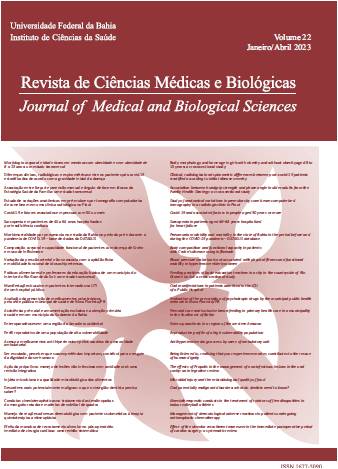Management of dermatological adverse reactions in patients undergoing antineoplastic chemotherapy
DOI:
https://doi.org/10.9771/cmbio.v22i1.37960Keywords:
antineoplastics; skin and subcutaneous tissue; hypersensitivity to drugs; exanthema; quality of life.Abstract
Objective: the present study aims to gather care recommendations considering the prevention and treatment of skin lesions induced by treatment with antineoplastic chemotherapy, according to current studies and consensus. Methodology: a bibliographical study was carried out to survey the relationships between the main antineoplastic drugs and their dermatological intercurrences, as well as their respective management, to subsidize the guidance and counselling of health professionals who treat cancer patients. Result: the main dermatological problems arising from the use of antineoplastic agents correspond to skin lesions, such as discoloration, hyperpigmentation, photosensitivity, erythema, scaling and pruritus. Adverse effects that affect hair and body hair are also recurrent, resulting in alopecia, and the modification of growth and lesions on the nails. Specific treatments for each case can alleviate or reverse the problems. Conclusion: adverse drug reactions involving chemotherapy are frequent in oncology practice, and vary in terms of frequency and severity, affecting various skin appendages. Proper management of these effects improves the integrity of the skin and other structures, providing these patients with improved self-esteem and quality of life.
Downloads
Downloads
Published
How to Cite
Issue
Section
License
Copyright (c) 2023 Journal of Medical and Biological Sciences

This work is licensed under a Creative Commons Attribution 4.0 International License.
The Journal of Medical and Biological Sciences reserves all copyrights of published works, including translations, allowing, however, their subsequent reproduction as transcription, with proper citation of source, through the Creative Commons license. The periodical has free and free access.


